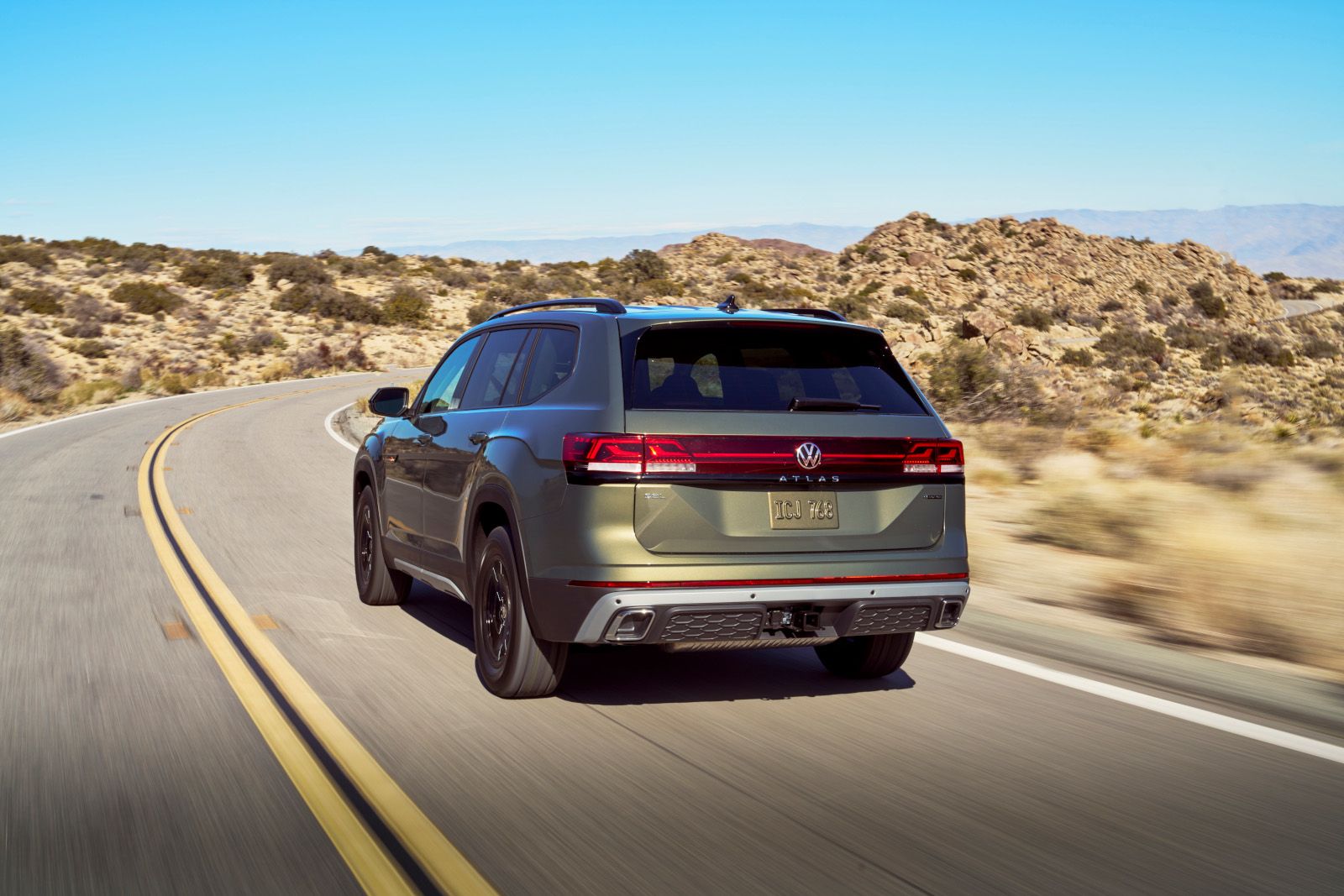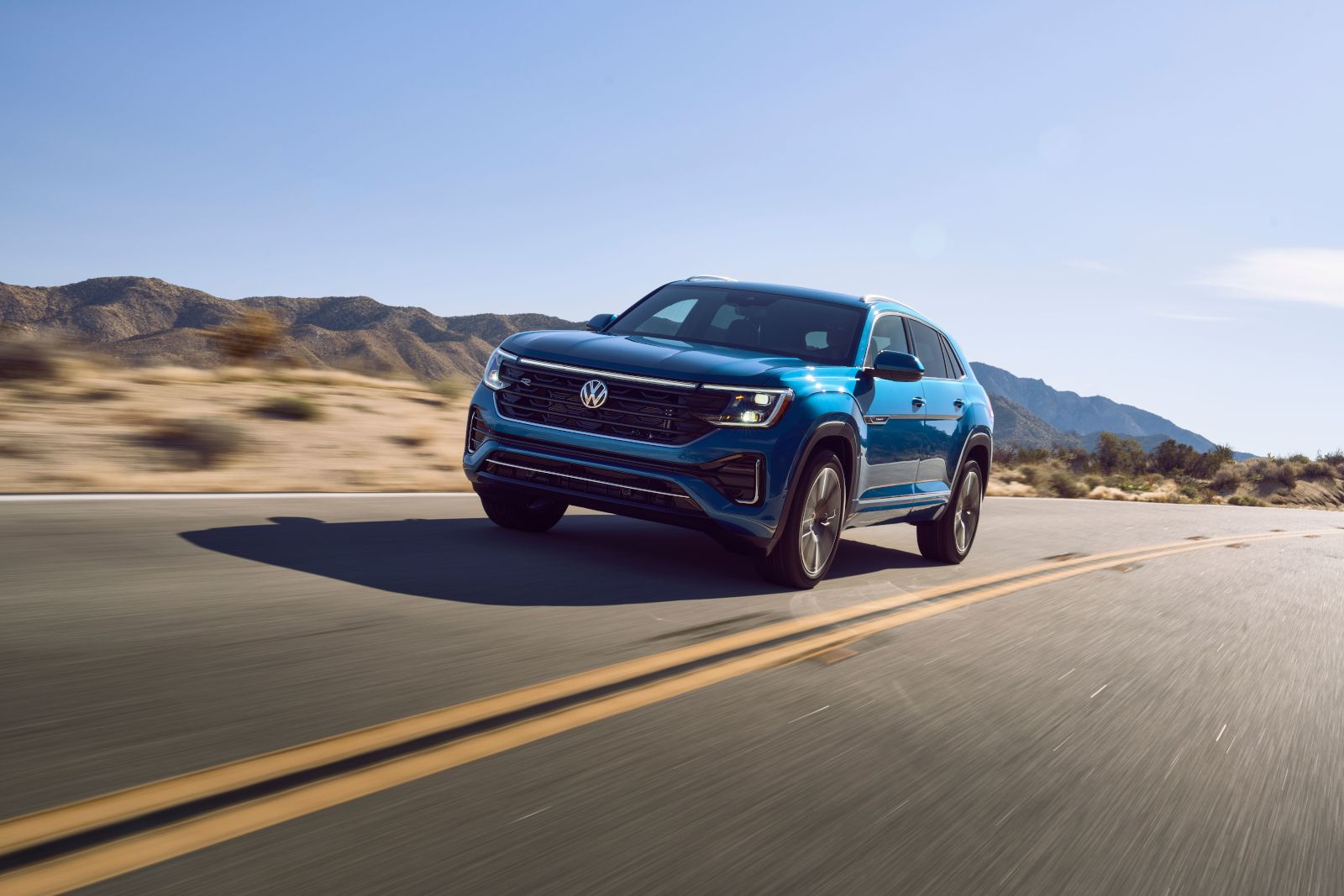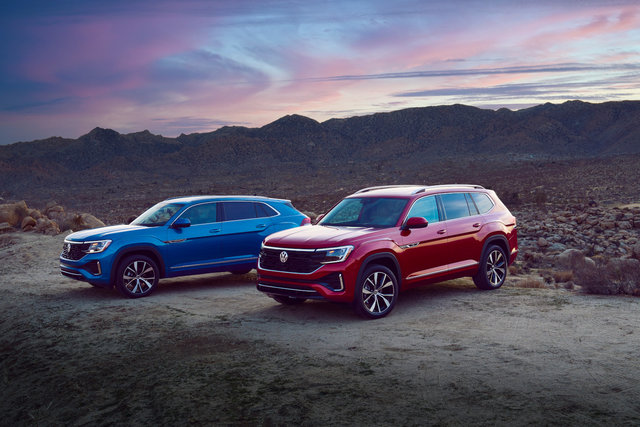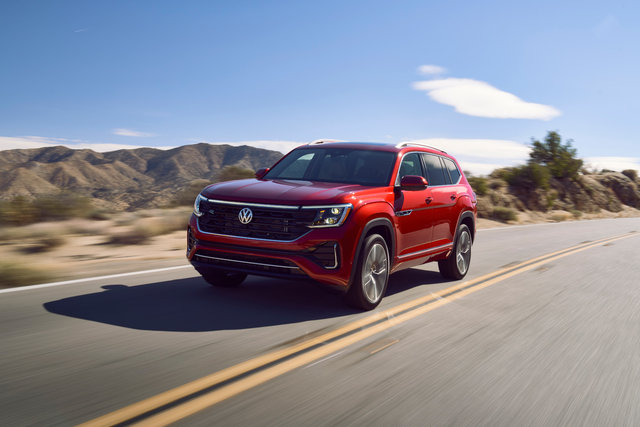Families in Orillia and Muskoka know that finding the right SUV means balancing space, style, and versatility. Some need seven seats for growing families and carpool duty. Others want maximum cargo room without the extra length. The 2026 Volkswagen Atlas and Atlas Cross Sport address these different needs while sharing the same engine, towing capability, and technology.
Both models deliver 269 horsepower from a 2.0-litre turbocharged engine, match the 2,268 kg towing capacity, and include the same IQ.DRIVE driver assistance suite. The choice comes down to how you use your vehicle most often—passenger capacity or cargo optimization.
At a Glance: Atlas vs. Atlas Cross Sport
|
Feature
|
2026 Atlas
|
2026 Atlas Cross Sport
|
|
Seating
|
7 passengers
|
5 passengers
|
|
Cargo Space (seats folded)
|
2,735 litres
|
2,197 litres
|
|
Length
|
5,097 mm
|
4,968 mm
|
|
Height
|
1,787 mm
|
1,729 mm
|
|
Engine
|
2.0 TSI turbocharged (269 hp, 273 lb-ft)
|
2.0 TSI turbocharged (269 hp, 273 lb-ft)
|
|
Towing Capacity
|
2,268 kg (5,000 lb)
|
2,268 kg (5,000 lb)
|
|
Fuel Economy (combined)
|
11.0 L/100 km
|
10.7 L/100 km
|
Seating Configuration: Seven Passengers or Five with More Flexibility
The Atlas provides three rows with seating for seven. The third row accommodates adults for short trips or children comfortably for longer drives. This layout handles carpool runs, family vacations, and trips to the cottage where every seat matters. Second-row seats include Easy Access functionality, making entry to the third row simpler for passengers.
The Atlas Cross Sport removes the third row entirely, creating a five-passenger cabin with a focus on cargo versatility. Without the third-row seats, you gain more consistent cargo depth and easier access to the load floor. For couples, small families, or those who rarely use more than five seats, the Cross Sport delivers the same interior quality without the extra seating capacity.
When to Choose the Atlas:
- You regularly transport more than five people
- You need carpool capacity for kids and sports teams
- Extended family trips require seven seats
- You want the flexibility of occasional third-row use
When to Choose the Atlas Cross Sport:
- You rarely need more than five seats
- You prioritize cargo space over passenger count
- You prefer a slightly shorter vehicle for parking and manoeuvrability
- You want a more athletic exterior profile
Cargo Capacity: Maximum Volume or Everyday Practicality
With all seats folded, the Atlas offers 2,735 litres of cargo space. This volume suits large equipment, furniture, multiple bikes, or extended camping gear. The third row folds flat when not in use, creating a long, open cargo floor. For cottage trips where you're packing for a full week and multiple passengers, the Atlas handles the load.
The Atlas Cross Sport provides 2,197 litres with the second row folded. While this is 538 litres less than the Atlas, it still offers substantial space for weekend getaways, sporting equipment, and daily errands. The cargo area maintains easier access due to the lower height and shorter rear overhang. For buyers who fold seats regularly but don't need maximum volume, the Cross Sport delivers practical space in a more compact form.
Cargo Comparison:
- Atlas: 2,735 litres (seats folded)
- Atlas Cross Sport: 2,197 litres (seats folded)
- Difference: 538 litres
Dimensions and Manoeuvrability: Size vs. Agility
The Atlas measures 5,097 mm in length and 1,787 mm in height. This larger footprint accommodates the third row but adds length during parking and turns. For cottage driveways, tight parking lots, and urban driving, the extra 129 mm in length is noticeable.
The Atlas Cross Sport shortens the overall length to 4,968 mm and reduces height to 1,729 mm. These reductions make the Cross Sport slightly easier to park and provide a more athletic stance. The lower roofline contributes to a sportier appearance while maintaining similar interior headroom for front and second-row passengers. Both models share the same 2,980 mm wheelbase, ensuring comparable interior legroom for the first two rows.
Dimensional Highlights:
- Atlas: 5,097 mm long, 1,787 mm tall
- Atlas Cross Sport: 4,968 mm long, 1,729 mm tall
- Difference: 129 mm shorter, 58 mm lower
Performance and Fuel Economy: Shared Power, Small Efficiency Differences

Both vehicles use the same 2.0-litre turbocharged TSI engine producing 269 horsepower and 273 lb-ft of torque. This engine provides strong acceleration for highway merging and confident passing power. The 4MOTION all-wheel drive system comes standard on available trims, delivering traction for Ontario winters and cottage-country roads.
Fuel economy differs slightly due to weight and aerodynamics. The Atlas averages 11.0 L/100 km combined, while the Atlas Cross Sport achieves 10.7 L/100 km combined. The Cross Sport's lower profile and lighter weight contribute to marginally better efficiency, though the difference is minimal during real-world driving.
Performance Specifications:
- Engine: 2.0 TSI turbocharged 4-cylinder
- Horsepower: 269 hp
- Torque: 273 lb-ft
- Transmission: 8-speed automatic
- Drive: 4MOTION all-wheel drive (available)
Towing and Capability: Equal Capacity Across Both Models
Both the Atlas and Atlas Cross Sport match towing capacity at 2,268 kg (5,000 lb) when properly equipped. This rating handles small trailers, boats, and utility trailers for cottage runs or equipment hauling. The towing package includes the necessary hardware, though the mount and ball are not included.
For buyers who tow regularly, either model delivers the same capability. Your choice between Atlas and Cross Sport depends on passenger and cargo needs rather than towing performance.
Technology and Features: Shared IQ.DRIVE Suite
The Atlas and Atlas Cross Sport include Volkswagen's IQ.DRIVE driver assistance technology across equivalent trim levels. This suite features Travel Assist for semi-automated driving support, Adaptive Cruise Control with Stop and Go for traffic management, Lane Assist to help maintain lane position, and Side Assist for blind-spot monitoring.
Interior technology includes the Volkswagen Digital Cockpit Pro (10.25-inch configurable instrument cluster), 12-inch touchscreen infotainment system, wireless App-Connect for Android Auto and Apple CarPlay, and voice control. Higher trims add navigation, Area View 360-degree camera, and Harman Kardon premium audio. Both models offer the same technology options at each trim level.
Styling Differences: Traditional SUV or Athletic Profile
The Atlas maintains a traditional three-row SUV appearance with a taller roofline and extended rear section to accommodate the third row. This design communicates space and family capability.
The Atlas Cross Sport adopts a sportier profile with a sloped roofline and shorter rear overhang. The design emphasizes athleticism over maximum utility. The Cross Sport's lower stance and tighter proportions appeal to buyers who want SUV capability without the full-size look.
Both models feature illuminated front light lines and emblems on higher trims, LED headlights with Adaptive Front-light System, and panoramic power sunroofs (available). Wheel options range from 18-inch to 21-inch aluminum-alloy designs depending on trim.
Which Model is Right for You?
The 2026 Atlas makes sense for families who regularly use seven seats, need maximum cargo volume, or want the flexibility of occasional third-row capacity. It's the right choice for carpool duty, extended family trips, and situations where passenger count matters more than vehicle length.
The 2026 Atlas Cross Sport fits buyers who rarely need more than five seats, prioritize cargo depth over maximum volume, or prefer a sportier appearance. It delivers the same power, towing, and technology in a more compact package. For couples, small families, or those who value agility over seating capacity, the Cross Sport provides practical space without the extra length.
Both models share the same engine, towing capability, and driver assistance features. Your decision depends on how you use your vehicle most often—carrying passengers or maximizing cargo flexibility.
Experience Both Models at Orillia Volkswagen
The Atlas and Atlas Cross Sport address different needs within the same platform. One prioritizes seating capacity and maximum cargo volume. The other focuses on five-passenger versatility and a more athletic profile. Understanding how you use your SUV most often makes the choice clear.
Book your test drive today at our Orillia dealership to compare both models side by side and find the right fit for your family.









